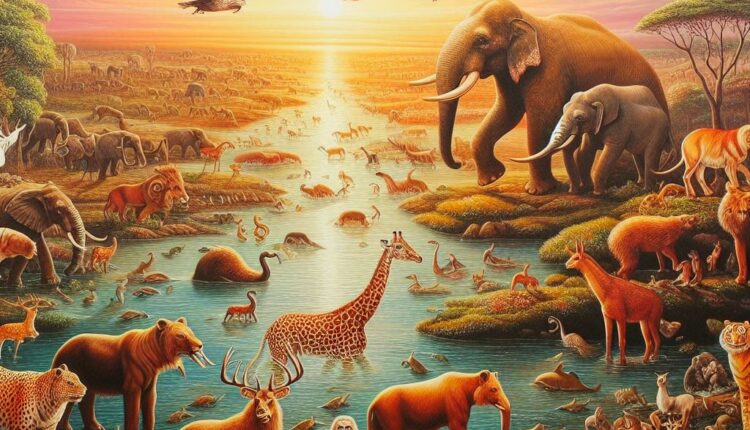The Evolution of Animal Depictions: Unveiling the Art of Zoo
The history of art is intricately woven with humanity’s fascination with the animal kingdom. From the enigmatic cave paintings of prehistoric times to the digital canvases of the 21st century, the representation of animals has evolved, reflecting cultural, scientific, and artistic shifts. In this exploration, we embark on a journey through time to uncover the profound evolution of the art of zoo – the depiction of animals in art.
Early Animal Representations in Ancient Civilizations
Cave Paintings and Petroglyphs
The roots art of zoo trace back to our earliest ancestors who expressed their connection with the natural world through cave paintings and petroglyphs. In Lascaux, France, and Altamira, Spain, vivid depictions of horses, bison, and aurochs grace the walls, offering a glimpse into the symbolic importance of these creatures in ancient cultures.
Egyptian Hieroglyphs and Animal Symbolism
The ancient Egyptians integrated animals into their hieroglyphs, assigning deep symbolism to each creature. The scarab beetle, for instance, symbolised regeneration and transformation, while the cat represented protection. These hieroglyphs not only communicated language but also conveyed spiritual meanings.
Mediaeval Bestiaries and Symbolic Animal Imagery
Introduction to Medieval Bestiaries
During the mediaeval period, illuminated manuscripts known as bestiaries emerged. These books combined zoological information with moral allegories, presenting animals as symbolic entities. The unicorn, often depicted as a symbol of purity, was a common motif in these manuscripts.
Renaissance and the Rise of Scientific Illustration
The Renaissance witnessed a shift from symbolic representations to a more scientific approach in depicting animals. Artists like Albrecht Dürer and Leonardo da Vinci contributed immensely to this transformation.
Albrecht Dürer and Leonardo da Vinci
Dürer’s “Rhinoceros” and da Vinci’s anatomical studies exemplify the intersection of art and science during this period. Dürer’s woodcut, though inaccurate in detail, ignited European fascination with exotic animals. Meanwhile, da Vinci’s meticulous sketches demonstrated a scientific curiosity that laid the foundation for accurate zoological illustrations.
The Golden Age of Natural History Illustration
As exploration expanded in the 18th and 19th centuries, naturalists and artists collaborated to produce detailed illustrations of newly discovered species.
James Audubon and Charles Darwin
James Audubon’s “The Birds of America” stands as a monumental work in ornithological illustration, capturing the beauty and diversity of North American birds. Charles Darwin, with his groundbreaking theories, influenced illustrators to portray animals in their natural habitats, contributing to a more realistic representation of the animal kingdom.
Modern and Contemporary Perspectives on Zoo Art
The 20th century witnessed diverse artistic movements, influencing the depiction of animals in various styles.
Art Deco and Contemporary Wildlife Art
The Art Deco movement brought a stylized and geometric aesthetic to animal motifs. In the contemporary era, wildlife artists like Robert Bateman and Charley Harper continue to captivate audiences with their unique interpretations of the natural world.
The Intersection of Technology and Animal Art
In the digital age, technology has reshaped how artists portray animals, offering new tools and mediums.
Digital Art and Virtual Zoos
Digital art of zoo allows for intricate details and vibrant colours, while virtual zoos and augmented reality exhibits provide immersive experiences. Artists now explore the intersection of technology and art to raise awareness about conservation issues.
Challenges and Controversies in Zoo Art
The art of zoo isn’t without its ethical considerations and controversies.
Ethical Considerations in Depicting Animals
Anthropomorphism, the attribution of human traits to animals, has faced criticism for its potential to distort scientific accuracy. Balancing aesthetic appeal with ethical responsibilities is an ongoing challenge for artists in this genre.
Conclusion
In conclusion, the art of zoo has evolved from symbolic representations to scientifically accurate depictions, reflecting changes in culture, exploration, and technology. As we appreciate the rich history of animal depictions, it becomes evident that the intersection art of zoo continues to inspire awe and deepen our connection with the animal kingdom.


